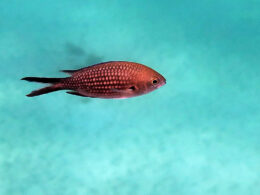This one’s for my foreign buddies who are still getting used to life on the rock. And who all rushed to book their trial dive in August, only to pay through the nose and find half of Europe sharing the same one metre of water. Here’s why now’s the month to give diving a go.
1. Water is at its warmest!
By September, the Mediterranean Sea around Malta has had the entire summer to warm up, making it the perfect time for diving. Water temperatures typically range between 25-27°C (77-81°F), providing a comfortable and enjoyable experience without the need for thick wetsuits. This warm water allows for longer, more leisurely dives, letting you fully immerse yourself in Malta’s vibrant marine life.
2. It’s also at its clearest
September is known for its crystal-clear waters around Malta, with underwater visibility often exceeding 30 meters (100 feet). This exceptional clarity makes it easier to explore the island’s famous dive sites, such as the Blue Hole in Gozo or the wrecks of Cirkewwa. The clear waters also enhance the vibrant colors of the coral reefs, sea caves, and marine creatures, offering breathtaking underwater vistas.
3. You’re not competing for space
As the peak summer tourist season winds down, September sees fewer visitors on the island. This means less crowded dive sites and a more serene diving experience. You can enjoy the tranquility of Malta’s underwater world without the hustle and bustle of summer crowds, making it easier to connect with nature and fully appreciate the dive
4. The sun isn’t too cruel
In theory, anyway. September in Malta boasts some of the best weather conditions for diving. The hot summer sun begins to mellow, and the days remain long and sunny with minimal rainfall. Calm seas and gentle breezes create perfect conditions for boat dives and shore dives alike. This stable weather allows for more predictable and safe diving experiences.
5. You can spot more fish
September is a fantastic time to encounter a wide variety of marine life around Malta. With warmer waters and less disturbance, you’re likely to see schools of barracuda, groupers, octopus, and maybe even the occasional turtle. The diverse ecosystems around the islands thrive during this period, offering rich and varied dive experiences at every turn round Malta, with underwater visibility often exceeding 30 metres. This exceptional clarity makes it easier to explore the island’s famous dive sites, such as the Blue Hole in Gozo or the wrecks of Cirkewwa. The clear waters also enhance the vibrant colors of the coral reefs, sea caves, and marine creatures, offering breathtaking underwater vistas.










